Ports are essential hubs of commerce in the United States, connecting the country to the global economy. They handle massive volumes of cargo daily, with each port playing a unique role in supporting trade, industry, and regional economies. Among them, a few stand out due to their size, efficiency, and significant impact on trade routes. From California to the East Coast, these ports are lifelines for countless industries and communities. Here’s a closer look at the largest and most influential ports in the U.S., detailing their history, capabilities, and surrounding landmarks.
Port of Los Angeles, California
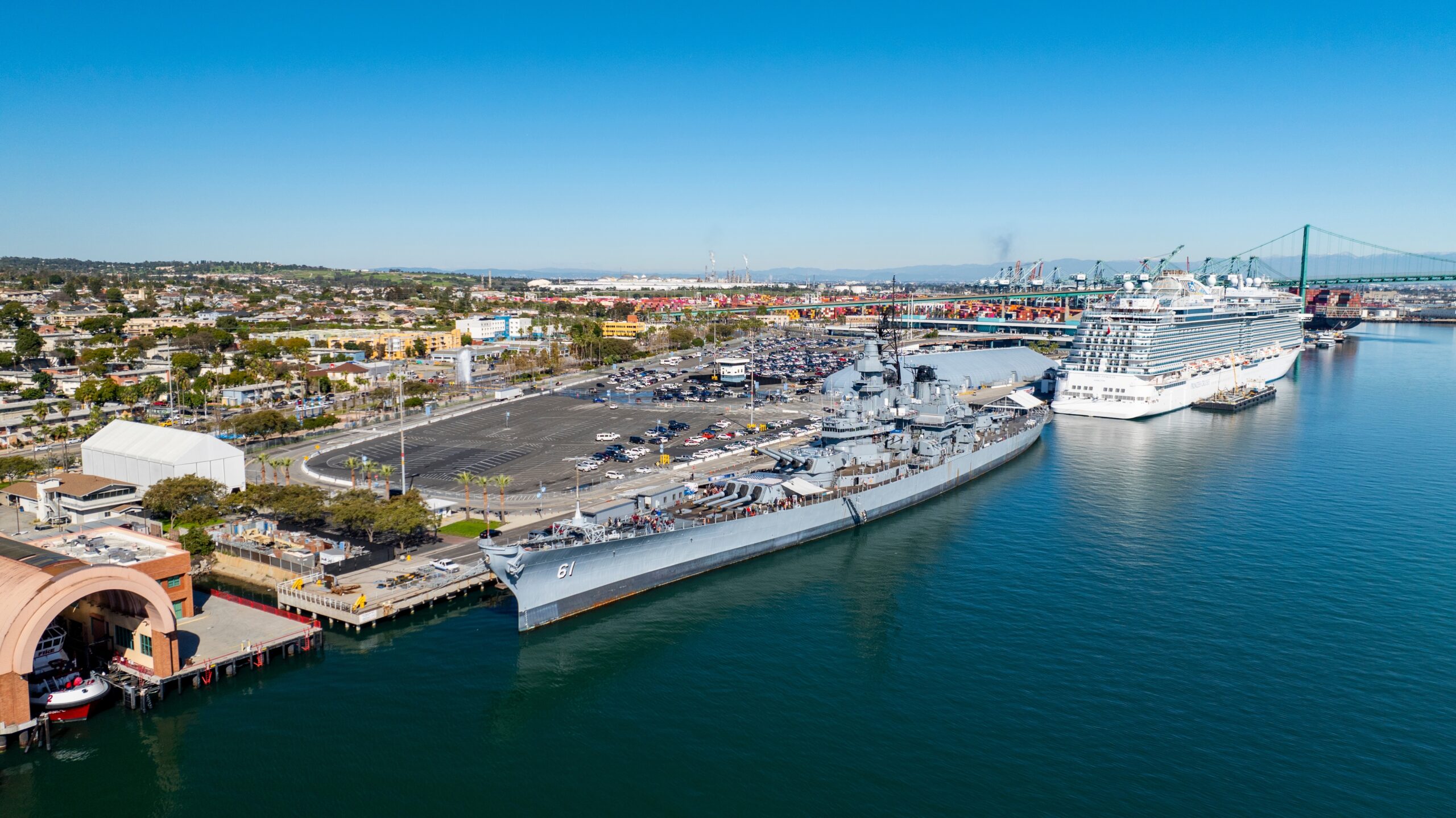
The Port of Los Angeles is the busiest port in the United States, known for its massive cargo capacity and strategic location on the Pacific Coast. This port handled over 10 million TEUs (twenty-foot equivalent units) in 2021, accounting for nearly 20% of all containerized cargo entering the United States. Opened in 1907, the port has grown steadily to become a major gateway for trade between Asia and North America. Nearby, visitors can find the iconic Vincent Thomas Bridge, connecting San Pedro with Terminal Island. This port’s extensive infrastructure and high-tech facilities make it a leading model for modern port operations and a key player in global trade.
Port of Long Beach, California
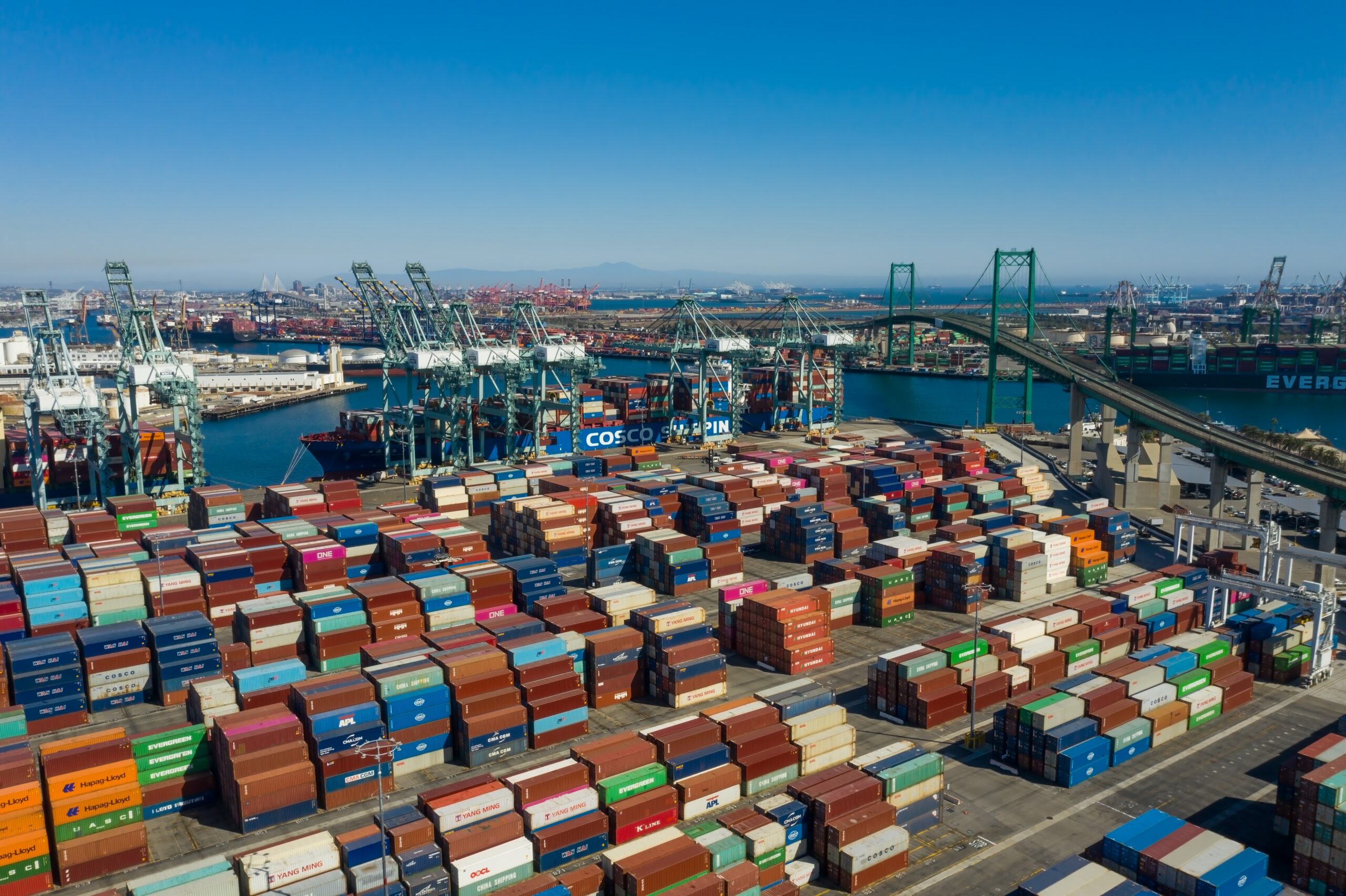
Right next to the Port of Los Angeles, the Port of Long Beach also ranks among the busiest ports in the country, handling approximately 9.4 million TEUs in 2021. It represents around 18% of the United States’ total container traffic, making it a vital part of the West Coast trade network. Established in 1911, this port has seen numerous expansions and updates to maintain its competitive edge. The Queen Mary, an iconic historic ship, is docked nearby and serves as a tourist attraction. Known for its focus on environmental sustainability, the Port of Long Beach implements green technologies to minimize its carbon footprint.
Port of New York and New Jersey
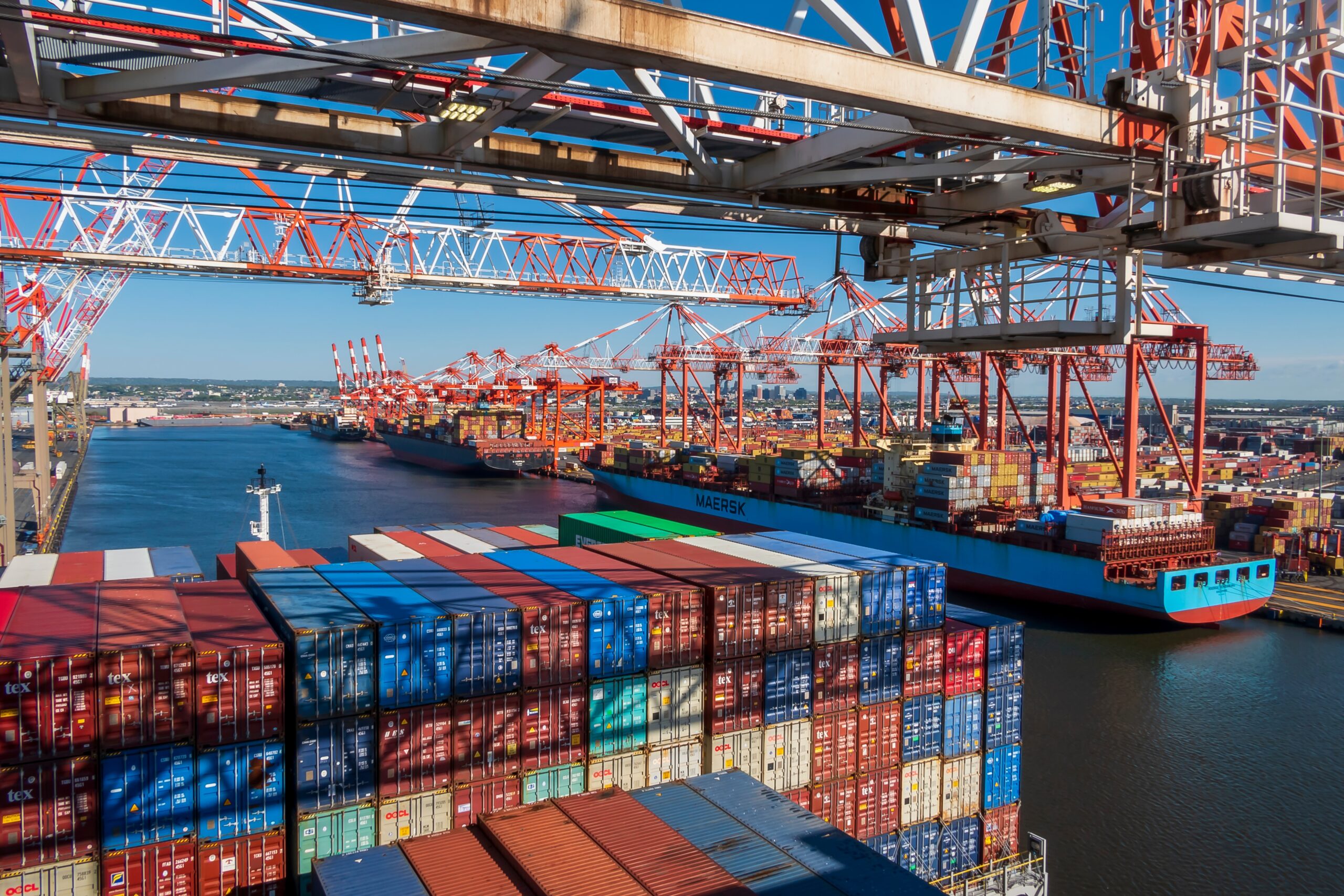
The Port of New York and New Jersey is the largest port on the East Coast, strategically positioned to serve as the primary gateway to the northeastern United States. In 2021, this port managed around 8.9 million TEUs, accounting for roughly 15% of the nation’s total cargo volume. Since its establishment in 1921, it has grown to become one of the most influential ports in the country. The Statue of Liberty, one of America’s most iconic landmarks, is located nearby, offering a symbolic welcome to goods and travelers alike. Known for its vast rail connections and efficient operations, this port remains vital to the region’s economy.
Port of Savannah, Georgia
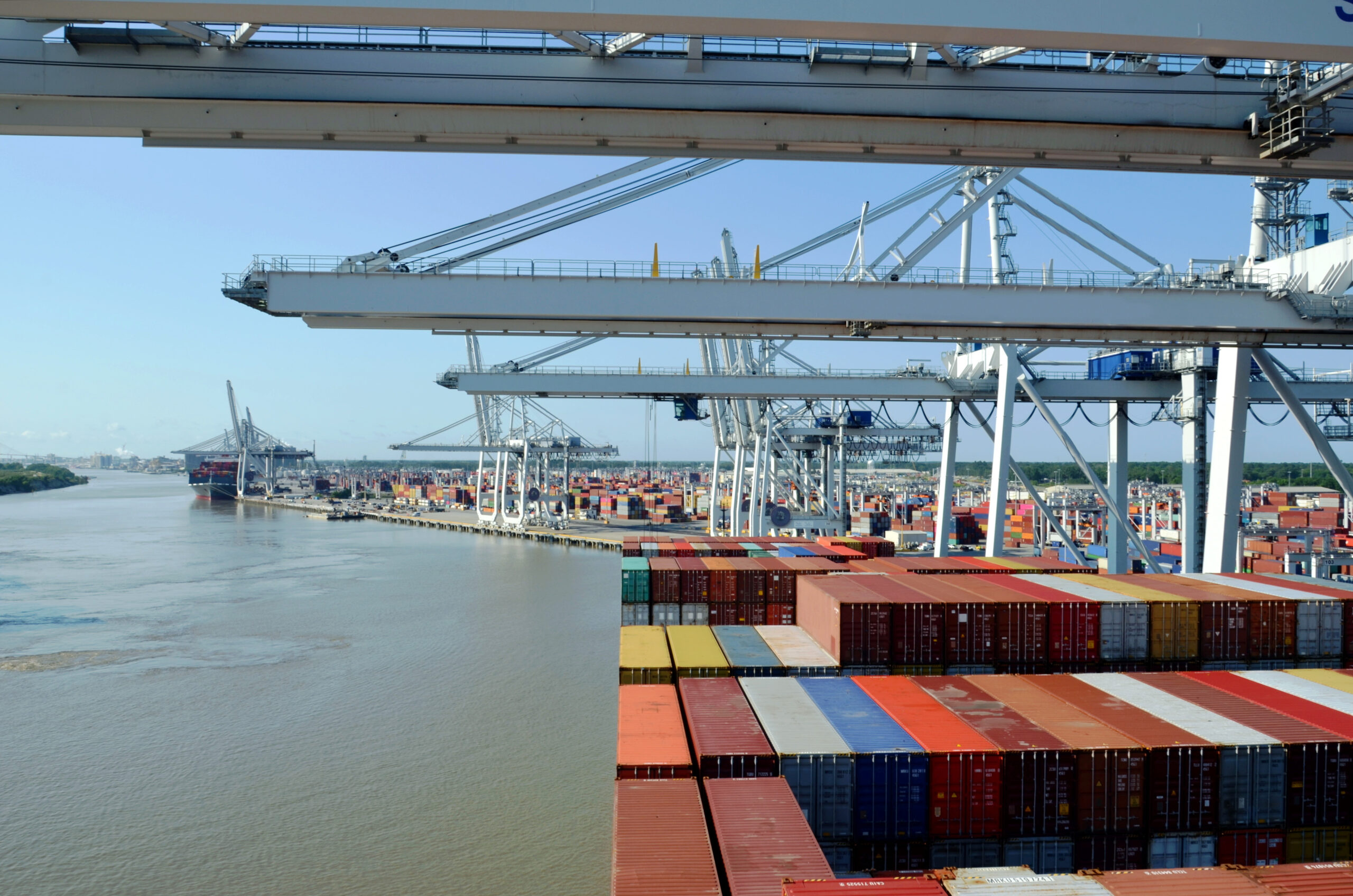
The Port of Savannah stands out as the busiest container terminal on the Southeast Coast, handling nearly 5.6 million TEUs in 2021. This port represents about 9% of the U.S. total and has grown rapidly due to its strategic location and efficient operations. Founded in 1945, it has become a leader in containerized shipping and exports of agricultural products. The historic downtown of Savannah is just minutes away, offering visitors a blend of southern charm and maritime activity. Renowned for its streamlined processes, the Port of Savannah continuously invests in expansions to keep up with growing demand.
Port of Houston, Texas
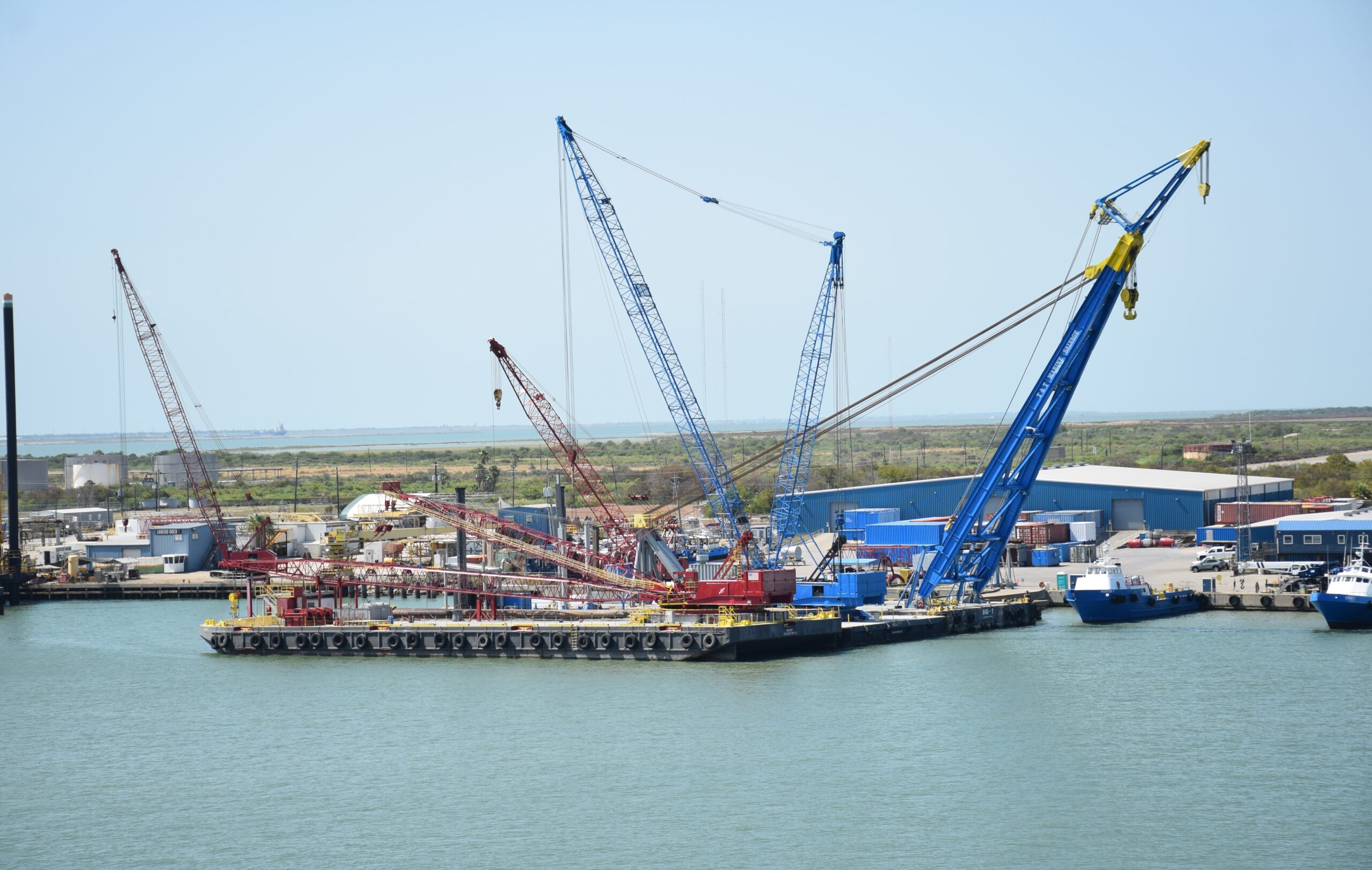
The Port of Houston is the largest port in Texas and a major player in U.S. energy exports, handling around 4.4 million TEUs in 2021, representing approximately 7% of the national total. This port opened in 1914 and has since developed into a global hub for oil, gas, and chemical exports. Situated near the Houston Ship Channel, the port has easy access to major refineries and petrochemical plants, making it an essential link in the energy supply chain. With continuous expansions and upgrades, the Port of Houston supports a vast array of industries beyond energy, including steel and heavy machinery.
Port of Seattle-Tacoma, Washington
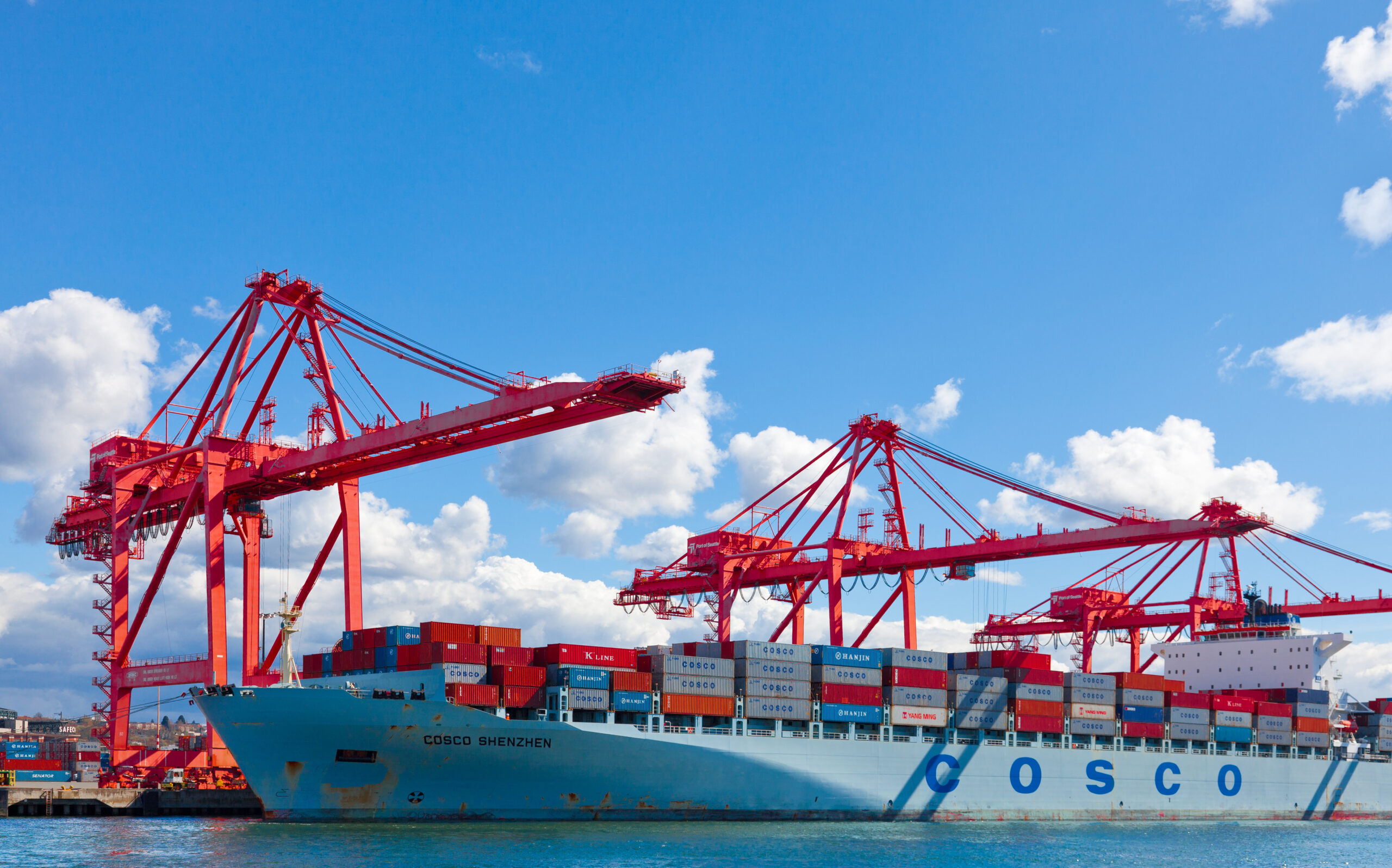
The combined Port of Seattle and Tacoma, known as the Northwest Seaport Alliance, ranks as one of the most significant ports in the Pacific Northwest. In 2021, it processed approximately 3.7 million TEUs, contributing about 6% to the U.S. total. The alliance formed in 2015 to strengthen regional competitiveness, though the individual ports have served the area since the early 20th century. Mount Rainier, a famous Washington landmark, is visible from the port on clear days. This port’s emphasis on sustainable operations and modernization projects keeps it competitive, enabling it to handle increased trade flows across the Pacific.
Port of Norfolk, Virginia
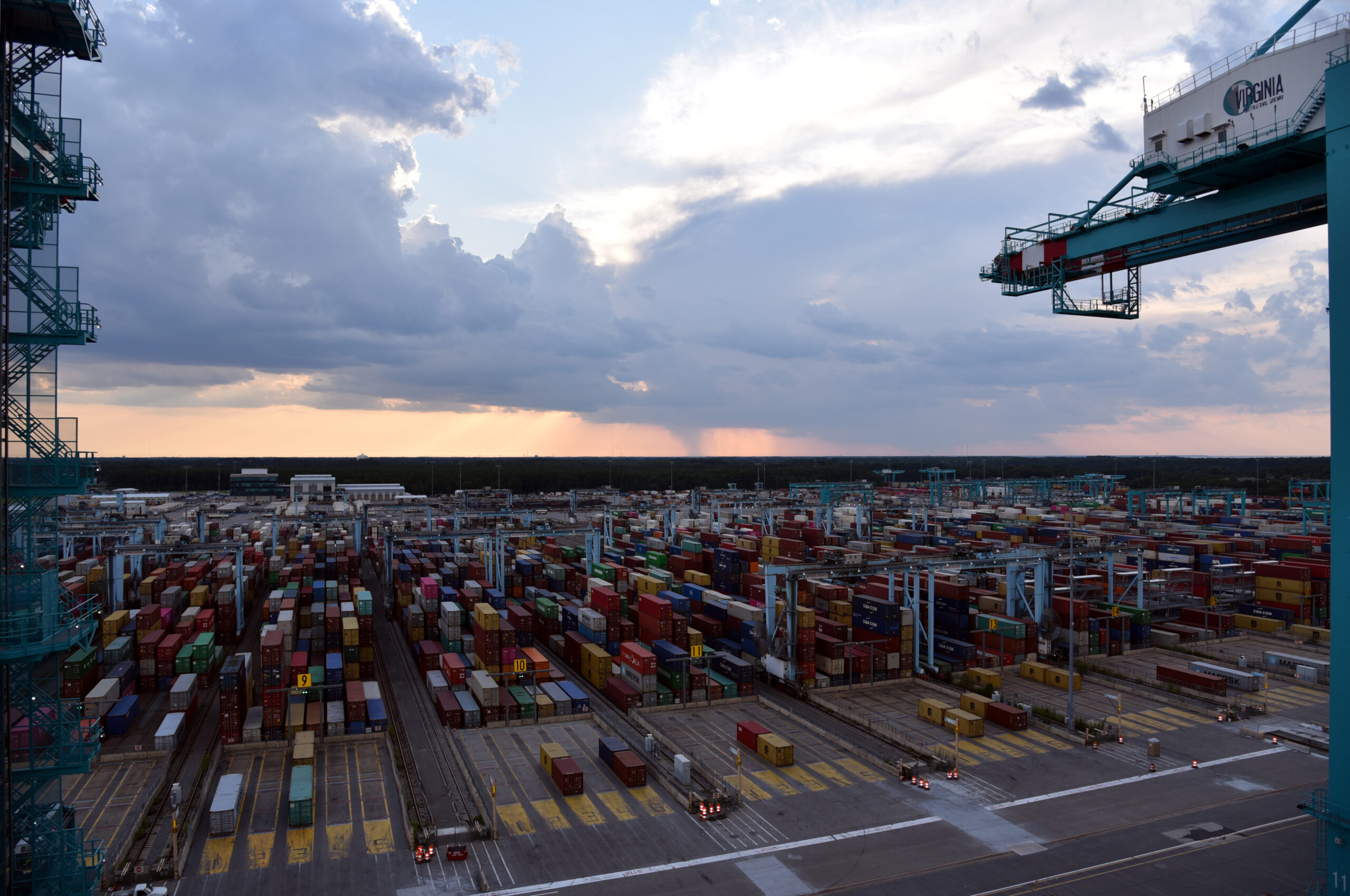
The Port of Norfolk, part of the Virginia Port Authority, is a major gateway on the East Coast and one of the busiest ports in the U.S. In 2021, it handled approximately 3.2 million TEUs, accounting for about 5% of the nation’s container traffic. This port opened in 1952 and has since become essential for trade with Europe and other regions across the Atlantic. Located near the historic Battleship Wisconsin in Norfolk’s downtown, this port attracts both commerce and tourism. Its advanced infrastructure and rail connections to major cities make it a crucial hub for imports and exports along the Eastern Seaboard.
Port of Oakland, California
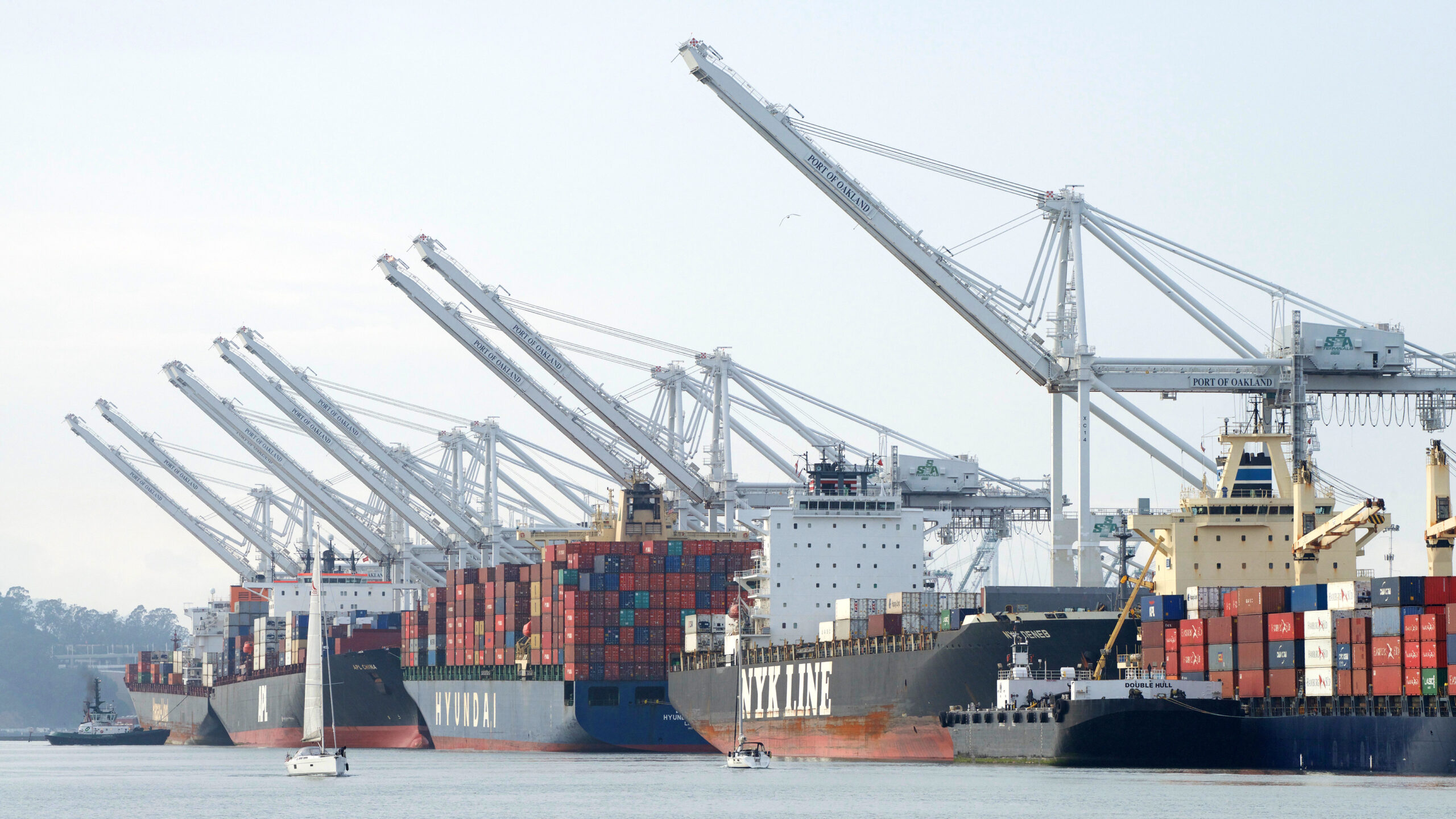
The Port of Oakland stands out as one of the largest ports on the West Coast, handling over 2.4 million TEUs in 2021, which accounts for nearly 4% of the U.S. total. Opened in 1927, the port was one of the first to specialize in containerized cargo, setting a standard in shipping efficiency. Its proximity to the iconic Bay Bridge provides easy access to the greater San Francisco Bay Area. Known for its innovation and environmental initiatives, the Port of Oakland continues to modernize, positioning itself as a vital hub for trade with Asia and the Pacific Rim.
Port of Charleston, South Carolina
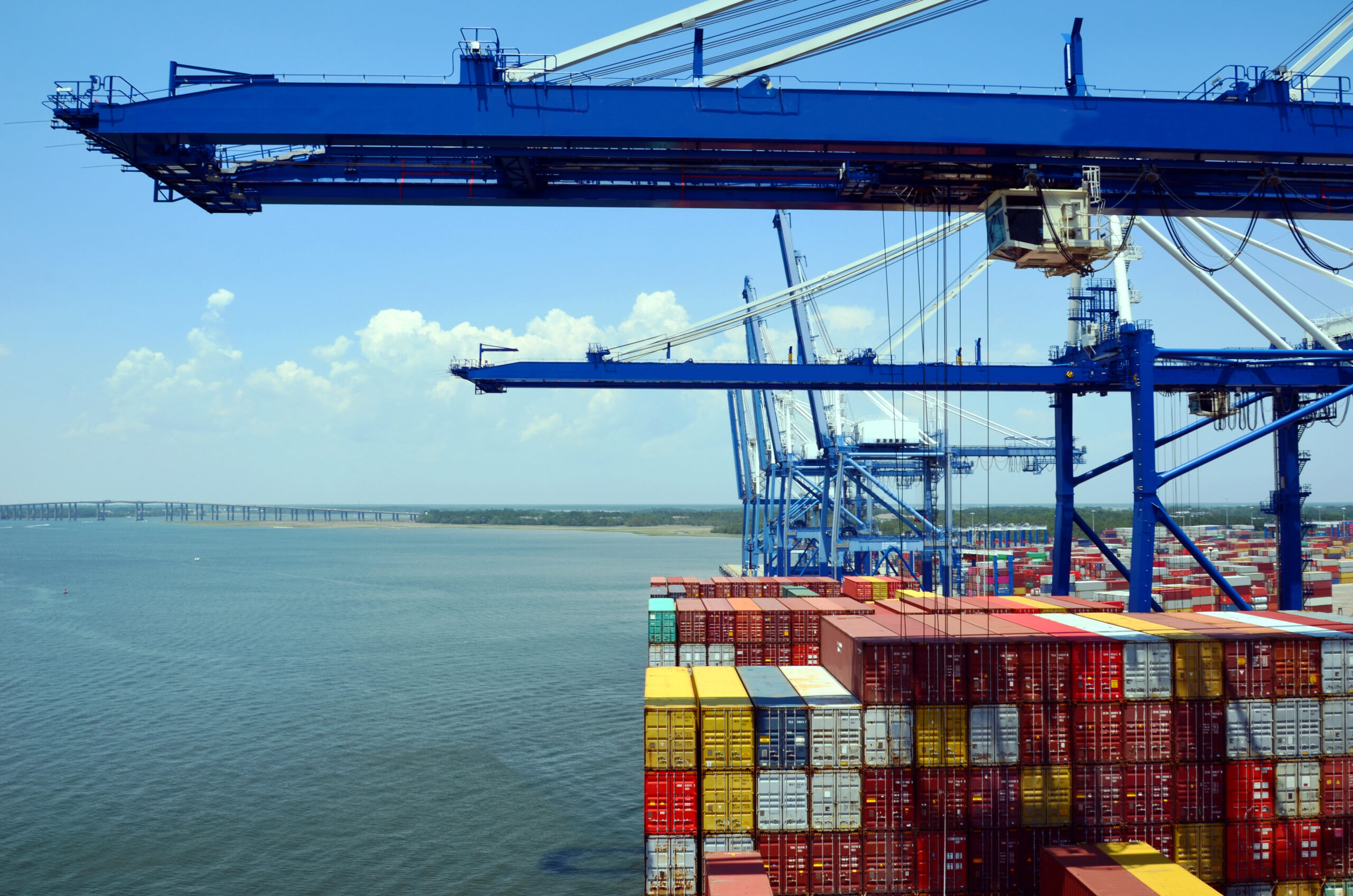
The Port of Charleston is one of the most active ports on the Southeast Coast, handling around 2.8 million TEUs in 2021, about 5% of the U.S. container volume. Established in 1942, this port has become a leader in U.S. exports, especially for agricultural products. Just a short drive from the historic Charleston City Market, the port connects to key inland distribution routes, supporting the region’s robust manufacturing sector. Known for its efficiency and modern terminals, the Port of Charleston continues to expand to meet rising demand in both import and export markets.
Port of Miami, Florida
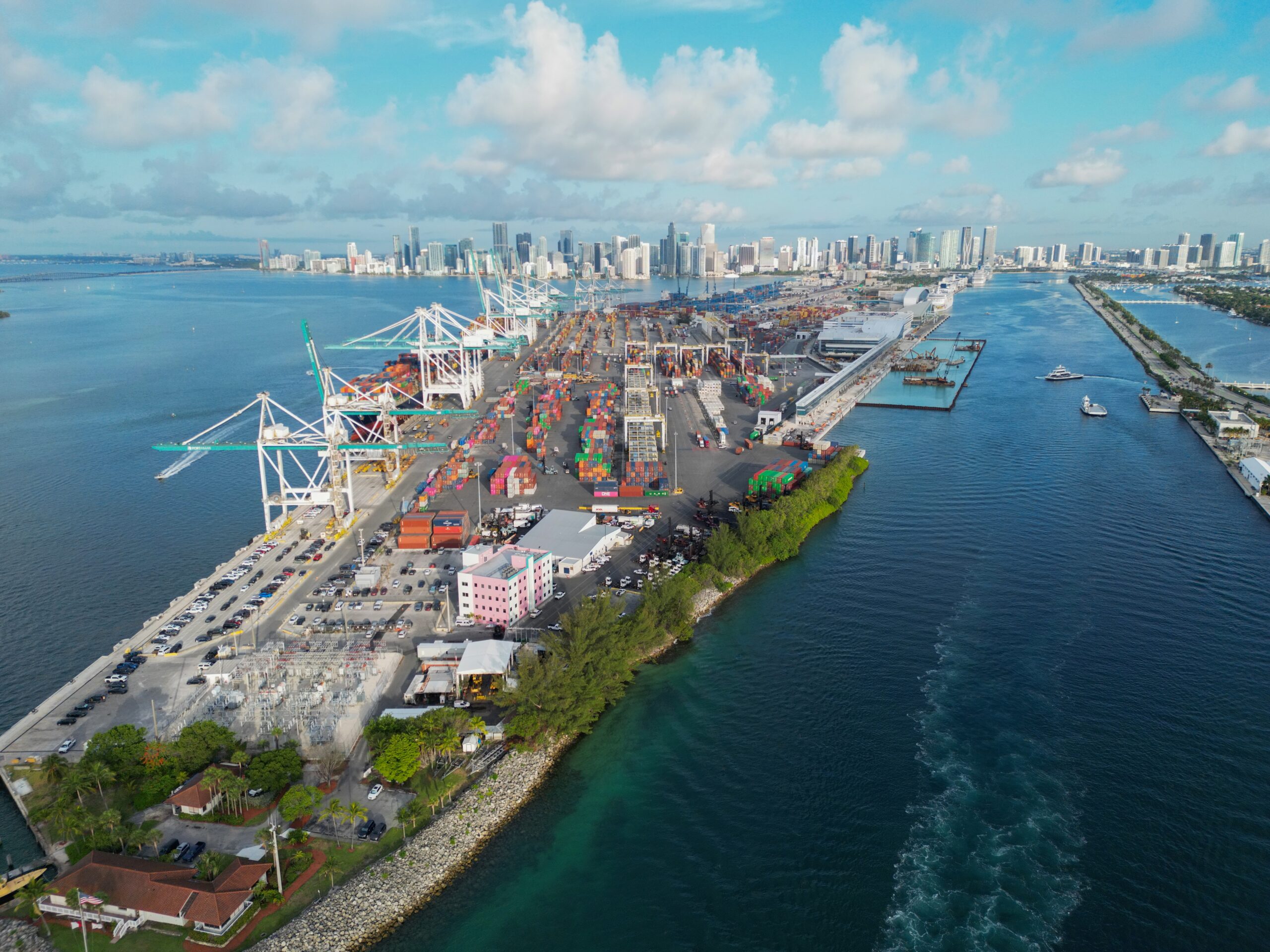
The Port of Miami, often called the “Cruise Capital of the World,” also handles substantial cargo traffic, processing around 1.25 million TEUs in 2021. This port contributes roughly 2% of the U.S. container volume and serves as a gateway to Latin America and the Caribbean. Opened in 1960, it’s located close to the famous South Beach and downtown Miami, making it a scenic yet highly efficient port. With its well-developed infrastructure and strategic location, the Port of Miami plays a vital role in tourism and trade, particularly in goods like electronics, perishables, and textiles.
Port of Port Everglades, Florida
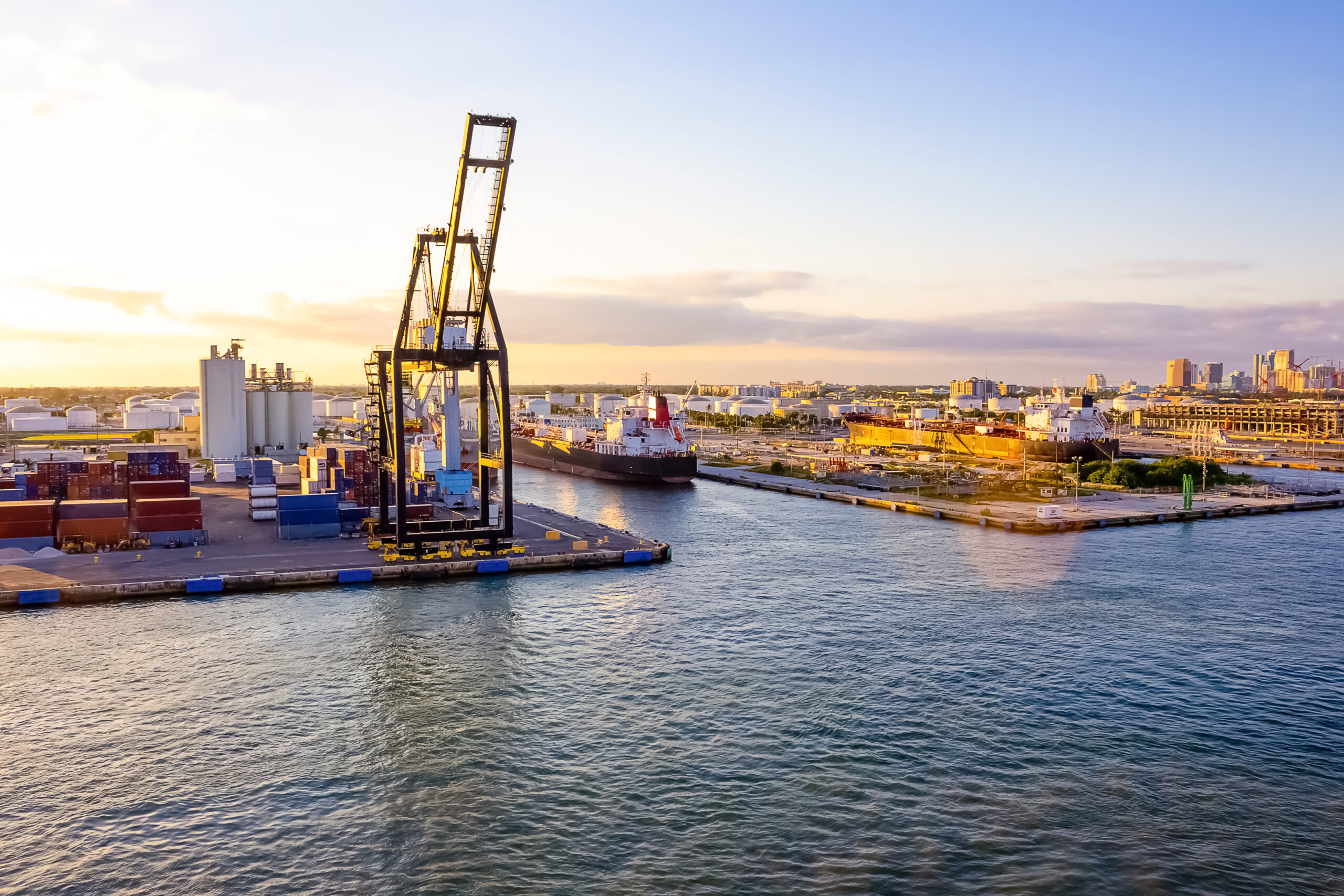
The Port Everglades is another major Floridian port, located in Fort Lauderdale and handling about 1.05 million TEUs in 2021, representing around 1.5% of the U.S. total. Since its establishment in 1928, it has grown to serve as a key link to Central America, South America, and the Caribbean. Close to Fort Lauderdale Beach, Port Everglades is known for its efficiency and accessibility. This port’s proximity to the Caribbean and Latin America has made it a critical trade route for goods like perishables and energy products, and it continues to expand to meet growing regional demands.
Port of Baltimore, Maryland
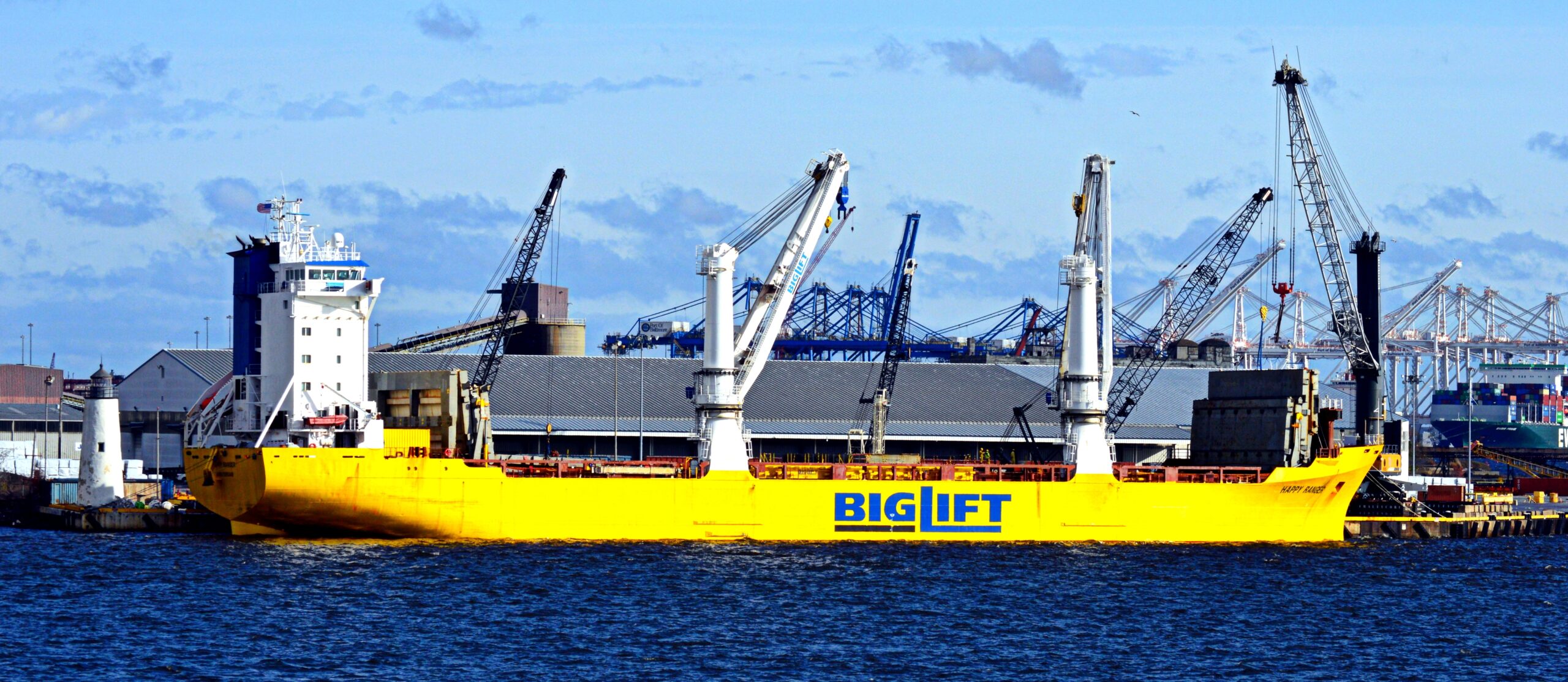
The Port of Baltimore is a highly versatile port known for handling not only containerized cargo but also cars, heavy machinery, and bulk commodities. In 2021, it processed about 1.0 million TEUs, accounting for approximately 1.5% of U.S. container volume. Established in 1706, it’s one of the oldest ports in the country and is located near the historic Inner Harbor. Its extensive rail and highway connections make it a vital logistics hub for the Northeast and Midwest. The Port of Baltimore remains a key asset for trade and transportation, particularly for vehicle exports.
Port of Jacksonville, Florida

The Port of Jacksonville, or JAXPORT, is a critical port on Florida’s northern coast, managing around 1.3 million TEUs in 2021, about 2% of U.S. container trade. Since its opening in 1963, it has become an essential link for trade with Puerto Rico and other Caribbean markets. Close to the scenic St. Johns River, JAXPORT is known for its specialized facilities, supporting both commercial and military cargo. Its strategic location and investments in new technology make it a growing player in U.S. maritime trade, supporting a diverse range of cargo types.
This article originally appeared on Rarest.org.
More from Rarest.org
20 Abandoned Places That Were Once Major Cultural Hubs
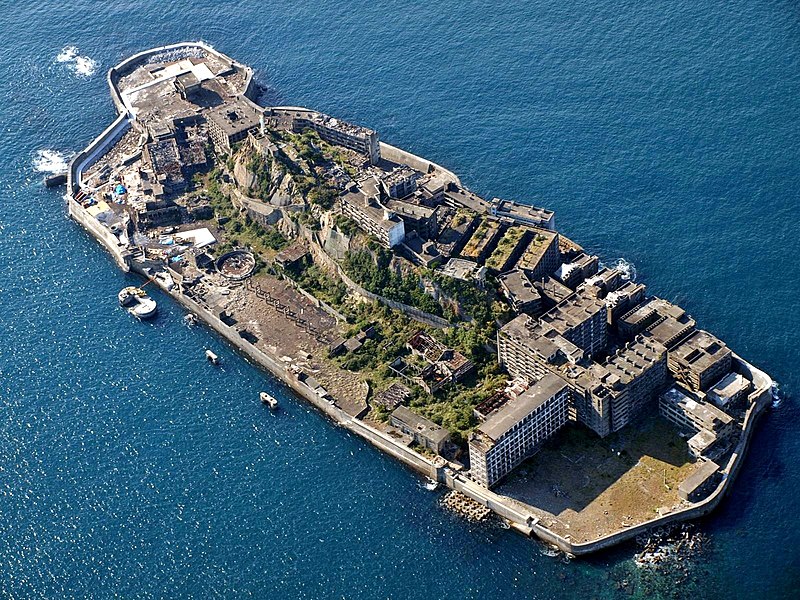
Many places around the world were once filled with life, culture, and community, only to be abandoned and left to the elements. Read More.
16 Largest Hospitals in the United States

The largest hospitals in the United States are more than just expansive buildings; they’re hubs of medical innovation, education, and essential patient care. Read More.
8 Oldest Oceanic Crusts in The World
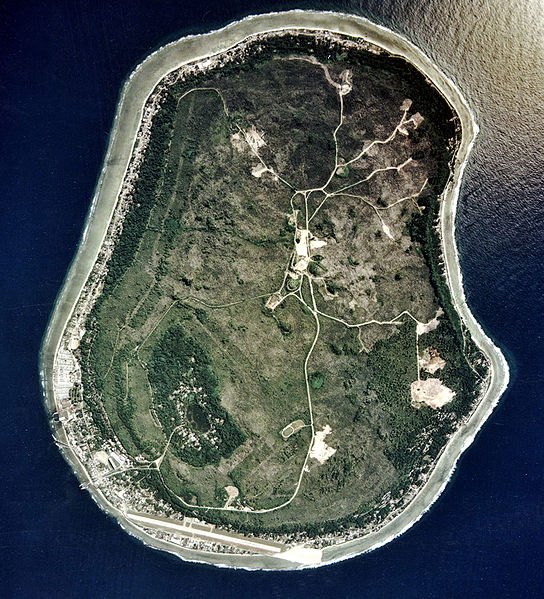
The ocean floor may seem timeless, but beneath the waves lie some of the oldest remnants of Earth’s geological history—oceanic crusts that have withstood millions of years of tectonic shifts, volcanic activity, and erosion. Read More.
